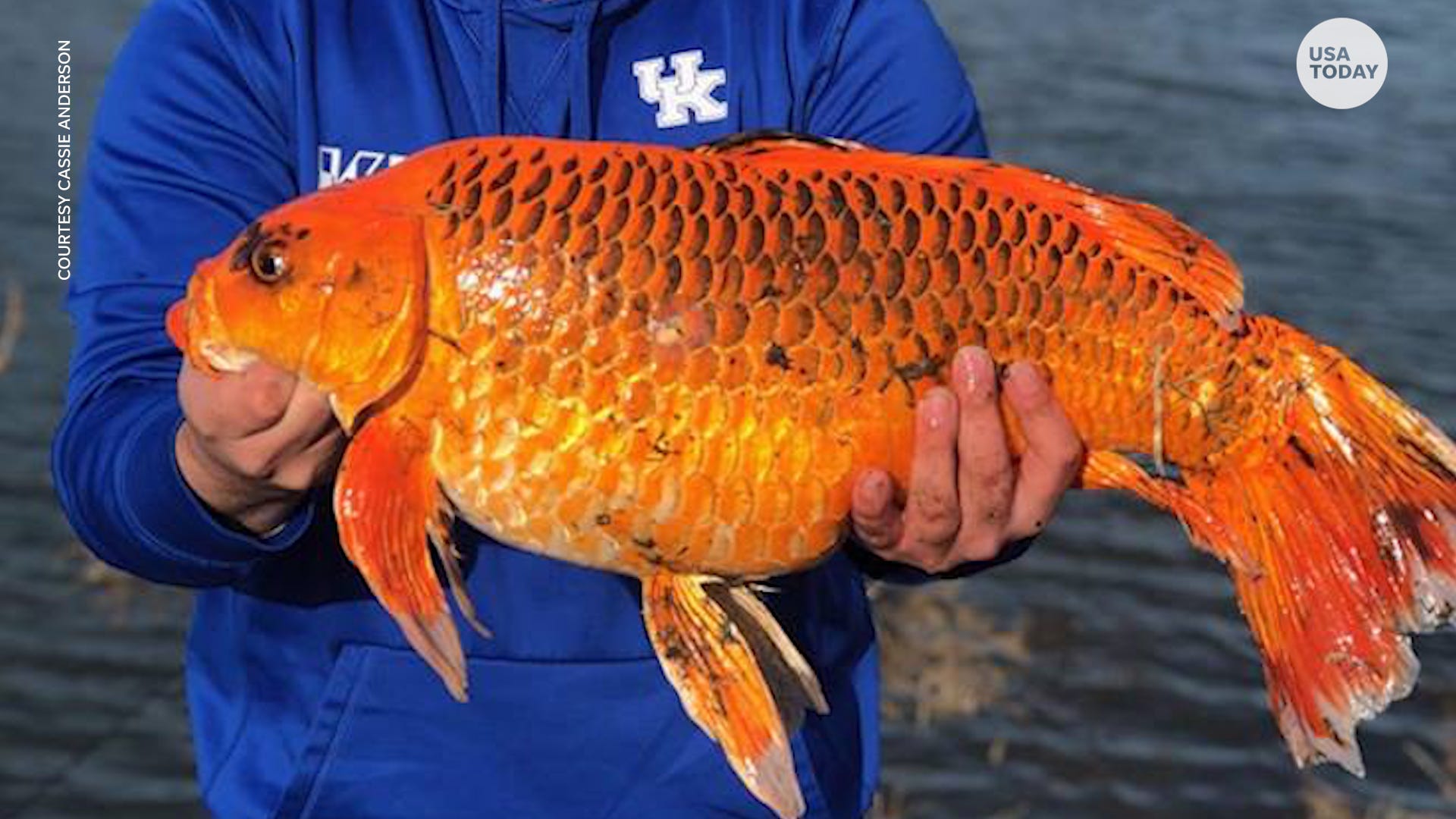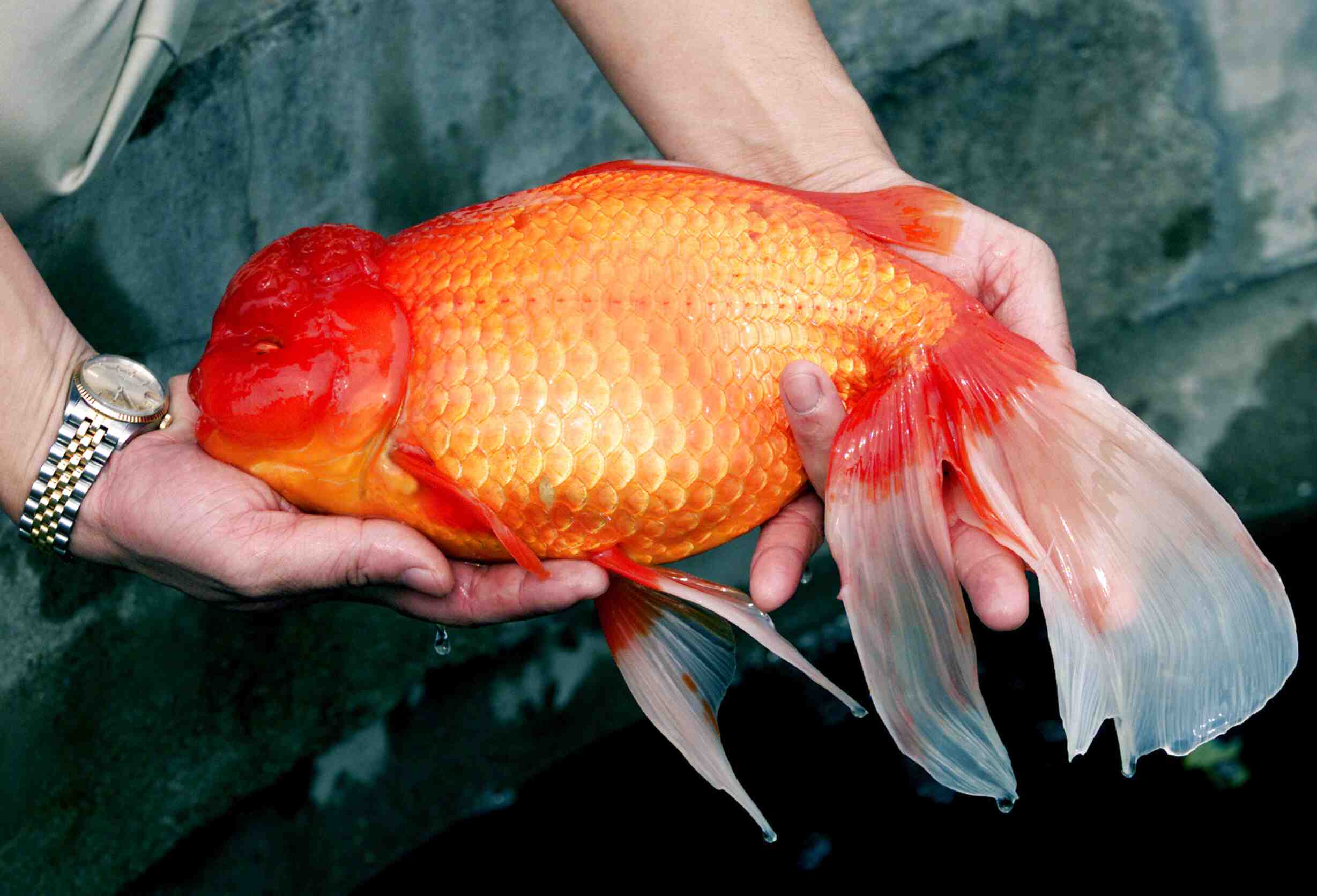Goldfish are often perceived as small aquarium pets, but many enthusiasts are surprised to learn that large goldfish can grow significantly in size under the right conditions. These beautiful aquatic creatures have captivated the hearts of many hobbyists worldwide, thanks to their vibrant colors, graceful movements, and intriguing behavior. While they are commonly kept in small tanks, goldfish have the potential to grow into impressive sizes when provided with ample space, proper nutrition, and optimal water conditions.
Contrary to popular belief, goldfish do not stop growing because of the size of their tank. Instead, their growth is influenced by genetics, environment, and care. Understanding the needs of large goldfish is essential for anyone who wants to provide them with a healthy and thriving habitat. In this article, we will delve into the fascinating world of large goldfish, exploring everything from their growth patterns to their care requirements.
Whether you're a seasoned aquarist or a beginner looking to expand your knowledge, this comprehensive guide will equip you with the information you need to ensure your large goldfish thrive. From understanding their dietary needs to creating the perfect environment, we’ll cover it all.
Read also:Millie Bobby Brown Nsfw Understanding The Controversy And Supporting Digital Safety
Table of Contents
- Growth Patterns of Large Goldfish
- Ideal Habitat for Large Goldfish
- Nutritional Needs of Large Goldfish
- Water Parameters for Large Goldfish
- Common Health Concerns in Large Goldfish
- Popular Breeds of Large Goldfish
- Suitable Tank Mates for Large Goldfish
- Breeding Large Goldfish
- Debunking Myths About Large Goldfish
- Tips for Caring for Large Goldfish
Growth Patterns of Large Goldfish
Large goldfish have the potential to grow significantly, often reaching lengths of 12 inches or more. Their growth is influenced by several factors, including genetics, water quality, and diet. While common goldfish can grow up to 18 inches in ideal conditions, fancy varieties may not reach the same size due to their physical structure.
One important misconception about goldfish is that their growth is limited by the size of their tank. In reality, a lack of space can lead to stunted growth, deformities, and health issues. Providing a spacious environment is crucial for their well-being. According to a study published in the Journal of Aquatic Animal Health, goldfish housed in larger tanks exhibit healthier growth patterns and live longer lives.
Factors Affecting Growth
- Genetics: Some goldfish varieties are naturally predisposed to grow larger than others.
- Water Quality: Clean, well-oxygenated water is essential for healthy growth.
- Diet: A balanced diet rich in protein and nutrients supports optimal growth.
Ideal Habitat for Large Goldfish
Creating the perfect habitat for large goldfish requires careful consideration of tank size, filtration, and decorations. As mentioned earlier, goldfish require ample space to thrive. A general rule of thumb is to provide at least 20 gallons of water per goldfish, with an additional 10 gallons for each additional fish. This ensures they have enough room to swim and grow.
Proper filtration is another critical aspect of their habitat. Goldfish produce a significant amount of waste, which can quickly degrade water quality if not managed effectively. A high-quality filter capable of handling the tank's capacity is essential. Additionally, incorporating live plants can help maintain water quality by absorbing excess nutrients and providing oxygen.
Decorating the Tank
- Substrate: Use smooth gravel or sand to prevent injury to their delicate fins.
- Plants: Choose hardy, fast-growing plants like Anacharis or Hornwort to withstand goldfish nibbling.
- Hiding Spots: Provide caves or driftwood for enrichment and security.
Nutritional Needs of Large Goldfish
A well-balanced diet is vital for the health and growth of large goldfish. Their diet should consist of high-quality pellets or flakes specifically formulated for goldfish, supplemented with fresh vegetables and occasional treats. Feeding them a varied diet ensures they receive all the necessary nutrients for optimal health.
It's important to avoid overfeeding, as this can lead to obesity and water pollution. Feed your goldfish small portions two to three times a day, ensuring they consume all the food within a few minutes. Any uneaten food should be removed promptly to maintain water quality.
Read also:Eddie Brooks A Journey Through The Life And Legacy Of A Remarkable Individual
Recommended Foods
- Pellets/Flakes: High-quality goldfish-specific pellets or flakes.
- Vegetables: Peas, zucchini, and spinach are excellent options.
- Treats: Brine shrimp or bloodworms can be offered occasionally.
Water Parameters for Large Goldfish
Maintaining optimal water parameters is crucial for the health of large goldfish. They thrive in water temperatures ranging from 68°F to 74°F, although they can tolerate slight variations. The pH level should be kept between 6.5 and 8.0, with a hardness level of 5 to 19 dGH.
Regular water changes are essential to keep the tank clean and free of harmful toxins. Aim to replace 10-20% of the water weekly, depending on the tank's size and the number of fish. Using a water testing kit can help you monitor ammonia, nitrite, and nitrate levels, ensuring they remain within safe limits.
Water Maintenance Tips
- Test Regularly: Use a reliable testing kit to monitor water parameters.
- Change Water Weekly: Perform partial water changes to maintain cleanliness.
- Use Dechlorinator: Treat tap water with a dechlorinator before adding it to the tank.
Common Health Concerns in Large Goldfish
Like any living creature, large goldfish are susceptible to various health issues. Some common problems include fin rot, swim bladder disorder, and ich. These conditions can be caused by poor water quality, improper diet, or stress. Early detection and treatment are key to preventing serious complications.
Fin rot, for example, is often caused by bacterial infections resulting from dirty water. Symptoms include frayed or discolored fins. Treatment typically involves improving water quality and administering antibiotics if necessary. Swim bladder disorder, on the other hand, can be caused by overfeeding or constipation. Adjusting their diet and feeding them soaked peas can help alleviate this issue.
Preventive Measures
- Maintain Water Quality: Keep the tank clean and well-filtered.
- Monitor Behavior: Watch for signs of illness such as lethargy or loss of appetite.
- Provide Balanced Diet: Ensure they receive proper nutrition to boost immunity.
Popular Breeds of Large Goldfish
There are numerous goldfish varieties, each with unique characteristics and growth potential. Some of the most popular breeds for large goldfish include:
- Common Goldfish: Known for their streamlined bodies and rapid growth.
- Comet Goldfish: Similar to common goldfish but with longer, flowing fins.
- Shubunkin Goldfish: Distinguished by their calico coloration and active nature.
While fancy varieties like Orandas and Fantails are also popular, they tend to grow smaller due to their physical structure. Choosing the right breed depends on your tank setup and personal preferences.
Suitable Tank Mates for Large Goldfish
When selecting tank mates for large goldfish, it's important to consider their size, temperament, and water requirements. Goldfish are generally peaceful and social creatures, but they produce a lot of waste, which can impact smaller, more sensitive species. Ideal tank mates include:
- Koi: Compatible in outdoor ponds due to their similar needs.
- Rosy Barb: Hardy and active, making them a good match for goldfish.
- Weather Loach: Bottom-dwelling scavengers that help keep the tank clean.
Avoid keeping goldfish with slow-moving or delicate species, as they may outcompete them for food or cause stress.
Breeding Large Goldfish
Breeding large goldfish can be a rewarding experience, but it requires specific conditions and preparation. Goldfish typically breed during the spring when water temperatures rise. To encourage breeding, gradually increase the water temperature to mimic seasonal changes and provide plenty of hiding spots for the eggs.
During the breeding process, males will chase females around the tank, often bumping into them to encourage egg release. Once the eggs are laid, it's best to remove the adult fish to prevent them from eating the eggs. The eggs will hatch in about 4-7 days, depending on the water temperature.
Breeding Tips
- Separate Breeding Tank: Use a separate tank for breeding to ensure safety.
- Provide Spawning Mops: Offer artificial or natural spawning mops for egg attachment.
- Monitor Temperature: Maintain a steady increase in water temperature to trigger breeding.
Debunking Myths About Large Goldfish
There are several misconceptions surrounding goldfish that can hinder their proper care. One of the most pervasive myths is that goldfish have short memories. In reality, they can remember things for several months and are capable of learning behaviors through conditioning.
Another common myth is that goldfish can thrive in small bowls. While they may survive for a short period, their growth and health will suffer without proper space and filtration. Additionally, goldfish are not solitary creatures and benefit from the company of other fish, provided they are compatible.
Common Myths
- Short Memory: Goldfish have longer memories than commonly believed.
- Small Tanks: They require large tanks or ponds for optimal growth.
- Solitary Creatures: Goldfish are social and enjoy the company of other fish.
Tips for Caring for Large Goldfish
Caring for large goldfish involves a combination of knowledge, patience, and dedication. Here are some final tips to help you provide the best care for your aquatic companions:
- Research: Learn about the specific needs of your goldfish variety.
- Monitor Health: Regularly check for signs of illness and address issues promptly.
- Engage: Spend time observing and interacting with your goldfish to strengthen the bond.
By following these guidelines, you can ensure your large goldfish live long, healthy lives. Remember, their well-being depends on the care and attention you provide.
Conclusion
In conclusion, large goldfish are fascinating creatures that require proper care and attention to thrive. From understanding their growth patterns to creating the ideal habitat, every aspect of their care plays a crucial role in their health and happiness. By providing them with ample space, a balanced diet, and clean water, you can enjoy the beauty and grace of these magnificent fish for years to come.
We encourage you to share your experiences and insights in the comments section below. Your feedback helps us improve and provides valuable information to fellow goldfish enthusiasts. Don't forget to explore our other articles for more tips and tricks on fishkeeping!


